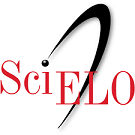Visibility and impact of Cuban pedagogical researches from the Google Scholar user's profile
Keywords:
Google Scholar, pedagogical researches, Cuban universities, bibliometric, digital bibliographic identityAbstract
Pedagogical researches are the cornerstone of the improvement of the teaching-learning process in the universities; its results must be widely disseminated so that they are useful at a global level. The Google Scholar (GS) is one of the most used scientific information systems to disseminate these results on the Internet. The objective of this study was to determine the visibility and scientific impact of Cuban pedagogical research based on the user profiles of the GS. The methodology was based on a bibliometric analysis of these profiles belonging to professors and researchers of the six Cuban universities with presence in the Regional QS Ranking for Latin America. It was concluded that the facilities offered by the GS to increase the visibility and scientific impact of Cuban pedagogical research have not been sufficiently exploited. Consequently, strategies must be implemented that increase the digital bibliographic identity of these professors and researchers.
References
2. Brunner, J. J. y Salazar, F. A. (2012). Investigación educacional en Iberoamérica: entre la invisibilidad y la medición. MAGIS, 4 (9), 559-575.
3. Delgado, E., Orduña, E., Jiménez, E. y Ruiz, R. (2014). H Index Scholar: el índice h de los profesores de las universidades públicas españolas en humanidades y ciencias sociales. El profesional de la información, 23(1), 87-94.
4. Fonseca, M. y Aguaded, I. (2014). Las revistas científicas como plataformas para publicar la investigación de excelencia en educación: estrategias para atracción de investigadores. RELIEVE-Revista Electrónica de Investigación y Evaluación Educativa, 20(2), 1-11.
5. Fuentes, H. C., de la Peña, R. y Milán, M. R. (2010). La evaluación del proceso docente educativo como proceso participativo y no directivo. Didasc@lia: Didáctica y Educación, abril-junio, (2), 39-52.
6. Gorina, A., Sierra, G., Alonso, I. y Salgado, A. (2018). Profesionalización de profesores universitarios en la gestión de publicaciones en revistas científicas de las ciencias sociales. Batey: Revista Cubana de Antropología Sociocultural, 11(11), 134-155.
7. Gorina, A., Martín, M. E. y Alonso, I. (2018). Gestión universitaria de la difusión y divulgación científica: Dos caras de una misma moneda. Revista Maestro y Sociedad, (Número Especial 4), 151-166. Recuperado de http://www.revistas.uo.edu.cu/index.php/MyS
8. Gorina, A. y Alonso, I. (2017). Gestión del ciclo de vida de la información de las investigaciones pedagógicas. Revista Varela, 17(48), 279-296.
9. Jacsó, P. (2008). The pros and cons of computing the h-index using Google Scholar. Online information review, 32(3), 437-452.
10. Kousha, K. y Thelwall, M. (2007). Google Scholar citations and Google web/url citations: a multi-discipline exploratory analysis. Journal of the American Society for Information Science and Technology, 58 (7), 1055-1065.
11. López, E. (2015). Conectando investigación y docencia en la universidad: teaching research nexus. Teor. educ., 27(2), 203-220.
12. López, E. D. y Orduña, E. (2016). ¿Cómo mejorar la difusión y visibilidad de un autor con Google Scholar Citations, ResearchGate y otras redes académicas? Construyendo la identidad digital de un científico en la web. Grupo de Investigación EC3. Recuperado de: http://digibug.ugr.es/bitstream/handle/10481/41049/Difusi%C3%B3n%20y%20visibilidad%20de%20la%20producci%C3%B3n%20cient%C3%ADfica%20en%20la%20web%20def.pdf?sequence=1
13. Martin, A. Orduna, E., Harzing, A. W., y Delgado, E. (2017). Can we use Google Scholar to identify highly-cited document? Journal of Infometrics, 11(1), 152-163.
14. Martin, A., Orduna, E. y López, E. D. (2018). Coverage of highly-cited documents in Google Scholar, Web of Science, and Scopus: a multidisciplinary comparison. Scientometrics, 116(3), 2175–2188.
15. Martin, A., Orduña, E., Ayllón, J. M., & Delgado, E. (2014). Does Google Scholar contain all highly cited documents (1950-2013)? EC3 Working Papers, (19). Recuperado de https://arxiv.org/pdf/1410.8464
16. Navarrete, J. y Banqueri, J. (2008). Los sistemas de información científica: herramientas para medir el impacto de la investigación biomédica. Med Clin (Barc), 131(Supl 5), 71-80.
17. Orduna, E., Ayllón, J. M., Martín, A. y Delgado, E. (2015). Aplicaciones métricas de Google Scholar para la evaluación del impacto científico. Actas de las 4ª Jornadas de Intercambio y Reflexión acerca de la Investigación en Bibliotecología. La Plata, Argentina. Recuperado de http://jornadabibliotecologia.fahce.unlp.edu.ar
18. QS Latin America University Rankings (2019). Methodology. Discover how the top universities in Latin America were ranked in the QS Latin America University Rankings 2019. Recuperado de https://www.topuniversities.com/latin-america-rankings/methodology
19. Serra, M. A. y González, G. (2017). La investigación en la formación de profesionales y en el profesorado de las ciencias médicas. Educación Médica Superior, 32(4), 1-14.
20. Torres, D., Ruiz, R. y Delgado, E. (2009). Google Scholar como herramienta para la evaluación científica. El profesional de la información, 18 (5), 501-510.
Downloads
Published
How to Cite
Issue
Section
License
This journal provides immediate open access to its content, based on the principle that offering the public free access to research helps a greater global exchange of knowledge. Each author is responsible for the content of each of their articles.


























 Universidad de Oriente
Universidad de Oriente 